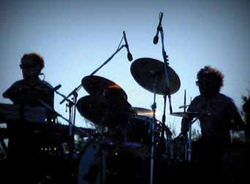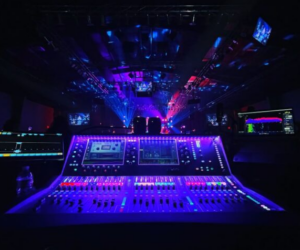Expanding on the basic technologies of dynamic and condenser transducers, manufacturers continue to develop new microphones to meet the needs of musicians and sound engineers in a range of formats, sizes, and price points.
In more recent introductions, we’re seeing a mix of innovative development, refinement of previous technologies, specialization of mics to specific applications, and changes in manufacturing.
Higher end condenser vocal mics are truly amazing devices, and even most of the relatively inexpensive models are durable, reliable, and sound good. However, one microphone designer recently lamented to me that some companies are becoming more focused on lowering manufacturing cost to meet competitive pricing points, with the result being a compromise of quality.
Looking at the latest offerings, companies are going with their strengths, and expanding on their unique technologies. For example, Countryman’s latest offering takes advantage of expertise with miniature, high-fidelity condenser mics, resulting in the H6 hypercardioid headset. Sennheiser continues to add dynamic and condenser models to the Evolution (“e”) Series, and beyerdynamic extends the TG Series with a ribbon model.
In addition, both DPA and Earthworks are building upon measurement mic backgrounds to introduce roadworthy condensers for vocals. These projects were motivated when touring engineers came to appreciate the audio qualities of these precision devices, experimented with them in the field, and then approached both companies with requests to develop them into a format for vocalists.
DPA made another step with the modular design of the d:facto II vocal microphone, where the transducer can be easily moved from the handheld format to a wireless adapter. Thus, the same mic can be used in either a wired or wireless application, as needed.
Beyond Tradition
Several ribbon models have been introduced relatively recently for both instrument and vocal reinforcement. These are rugged enough to survive the rigors of touring, with robust shock mounting and internal windscreens to permit high SPL applications. Both take advantage of neodymium magnetic structures and active electronics to boost output levels. Instrument models are available from Shure, Audio-Technica, and Royer, while beyerdynamic offers the TG V90r in a handheld vocal format.
Beyond the traditional handheld mic and pencil condenser, other forms have found greater favor for live sound – especially for miking instruments. Small-format condenser capsules are used on wind instruments, stringed instruments ranging from mandolin to acoustic bass, and are even found mounted above piano soundboards.
A variety of dynamic and condenser mics in more “studio style” formats are used on drum kits, percussion, brass, and guitar amps. One manufacturer points to greater creativity from engineers in the field, who are experimenting with mics across many applications and in non-traditional ways.
Extending or modifying a popular model is another way to bring out new features or specialized applications. Neumann raised the low-end response curve of the KMS 104 to create a vocal mic tailored to female vocals – the KSM 104 plus cardioid condenser. Electro-Voice builds upon its classic RE20 Variable-D design with the RE320 that offers a dual-voicing switch to select from two response curves, and at an approachable price point. Audix has created microphone “packs” that offer a combination of vocal and instrument mics in a convenient case, and several other manufacturers offer drum mic kits with different models for kick, snare, toms, and overheads.
Future Vision
Introduced within the past couple of years, Neumann KMS mics are also available in digital versions, with A/D converters within the mic itself. Going from analog to digital right after the transducer gives the benefits of extended dynamic range, an integrated peak limiter/compressor to control clipping, and immunity to electromagnetic noise induced into the mic cable. Specialized software allows remote control of some microphone settings. A-T, Blue, and others have digital mics with USB connectors for direct connection to computers for recording, so further advancement of this technology is likely.
Line 6 provides microphone modeling within its handheld wireless transmitters, approximating the audio response characteristics of a variety of microphone models with the push of a switch. Will some variant of this technology become available in a phantom-powered wired microphone? The miniaturization of circuitry and powerful DSP algorithms could make this possible. Blue’s enCORE 300 handheld incorporates specialized preamp circuitry to stabilize the transducer’s response across all frequencies and SPL levels, further demonstrating that more sophisticated and complex circuitry can fit within the mic handle.
As the rest of the live sound signal chain – from console to loudspeaker arrays – has become more sonically accurate, it’s easier to discern the difference between a good and a great mic, and investing in a better model can make a live show sound more like the recording. Better controlled stage monitor coverage patterns, in-ear monitors, and more precise equalization have made it more feasible to use studio-style condenser mics on stage and still achieve the necessary levels without excessive feedback.
Of course, there’s always room for more innovation and invention – the quest to take it from very good toward that unreachable “perfect.” And some manufacturers, at least, will welcome the creative requests of sound engineers for new models that better solve particular problems.
Perhaps my “blue sky” imaginary miniature mic embedded in the singer’s front tooth – a daydream while sitting at my desk long ago while with Electro-Voice – will become a reality some day, solving the positioning problems inherent in lavalier mics, and the obtrusiveness (at least a couple decades ago) of headsets. Though where to place the mute switch – on the right cheek, left ear lobe, or…?
Enjoy our Real World Gear Photo Gallery Tour of recent dynamic and condenser microphones.
Pro audio writer Gary Parks has worked in pro audio for more than 25 years, including serving as marketing manager and wireless product manager for Clear-Com, handling RF planning software sales with EDX Wireless, and managing loudspeaker and wireless product management at Electro-Voice.
















